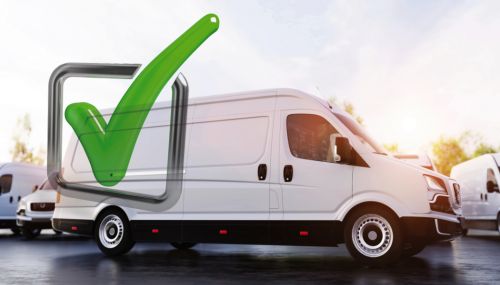All
“Yes, and …”
by Richard Rutigliano, PriMedia, Inc.

How to sell biofuel-compatible heating systems in addition to, not instead of, heat pumps
“Yes, and …” is an improvisational comedy/acting technique that moves the action along no matter what is thrown at you. It is also a way of being more open to change, considering other opinions, enhancing dialog, and yes, selling more heating equipment.
In our July article, “Selling Heating Equipment for a Net-Zero Future,” we discussed ways to position your renewable liquid heating fuel powered systems as the smart, environmentally responsible options for homeowners who are ready for an upgrade. Upgrading is less expensive than switching to electric heating, is more efficient, and will provide immediate GHG reductions.
But that’s not to say there is no place for heat pumps – many of you sell and install them. They make for great air conditioners, can help provide supplemental heating in single rooms, and might some day be able to deliver zero-carbon whole-home comfort. On the other hand, renewable liquid heating fuels offer a “real-world” path to net-zero heating, and are the next iteration of the fuels on which our businesses have been built.
But…
…the news is filled with doomsday warnings about continued use of fossil fuels.
…heat pumps can be very efficient.
…states are offering tax credits and rebates for system conversions to electric heat.
…every state in the region as well as Congress is considering laws to promote electric heat or penalize liquid heating fuel users.
…many homeowners and legislators will not even consider arguments about the downsides of electric heat or tomorrow’s renewable electric grid (or even the current non-renewable electricity supply).
The most effective communicators know that when the “buts” start to pile up, it’s time to shift the conversation with “yes, and …” They will also tell you that “yes, and …” works best after practice and training, so that responses are readily at hand.
Changing “But” to “Yes, and …”
What makes “yes, and …” work so well is that you begin by acknowledging the other individual’s position. We, the liquid fuel industry, can agree that Bioheat® fuel is the best low-carbon heating solution available right now with the clearest path to reaching net-zero emissions by 2050.
We can agree that the odds of the renewable electric grid being strong enough by 2050 to meet the anticipated needs of heating, generation, transportation, and manufacturing are about equal to the odds of me winning the Masters, no matter how much I’d like to believe in the possibility.
However, responding to the arguments cited above with any form of “no, you’re wrong because …” may shut down the conversation and close off any chance of understanding, let alone any possibility of a sale.
So, let’s take another look at those pro-electric-heat statements, and possible “yes, and …” answers:
But the news is filled with doomsday warnings about continued use of fossil fuels. Yes, and the RLHF industry plans to eliminate fossil energy by 2050 with specific targets over the next 30 years.
But heat pumps are very efficient. Yes, and they work well in many situations, which is why we sell them. And when temperatures drop, heat pumps run much less efficiently, and when operating in near- or below-freezing temps, they need to run through an hours-long defrost cycle more frequently. This is why biofuel-compatible, high-efficiency boilers and furnaces remain the most effective solution for whole-home comfort, reliability and energy savings, and why heat pumps make for an excellent backup system.
But states are offering tax credits and rebates for system conversions to electric heat. Yes, and when you combine those with rebates available for high-efficiency liquid heating fuel systems you can save even more and enjoy low-carbon comfort no matter how low the temperature drops. In fact, according to a NORA study previewed at the 2021 HEAT Show, the annual energy cost savings delivered by a high-efficiency boiler or furnace are greater than those associated with a conversion to mini-splits.
But every state in the region as well as Congress is considering laws to promote electric heat or penalize liquid heating fuel users. Yes, and that’s why we are working to ensure renewable liquid heating fuel benefits from carbon scoring programs and that the equipment that runs on it is eligible for federal and state tax credits and rebates.
But many homeowners and legislators will not even consider arguments about the downsides of electric heat or tomorrow’s renewable electric grid (or even the current coal/gas/nuclear electric supply). Yes, and that’s why we want to help them understand that renewable liquid heating fuels offer a path to net-zero alongside other measures. We want them to see that we are part of the solution, not part of the problem. We want them to get to “yes, and” instead of “no, but.” And we’re making real progress on this front. Even Citizen’s Climate Lobby has determined that, “Without some role for bioenergy, decarbonization of our energy systems would be far slower and more difficult.”
Selling Best Practices
There are many reasons to install heat pumps, as you well know. But they are not the “be-all and end-all” for home heating in the Northeast. ISO New England predicts that only 15% of the 1.1 million heat pumps installed by 2030 will be “full heating” installations. The other 935,000 will be air conditioners and backup heating systems.
Thankfully, NORA researchers have provided us with best practices for using a combination of heat pumps and liquid heating fuel systems, giving us our final “yes, and” answer backed by real-world applications.
“Because of the way they provide heat, hydronic and heat pump systems achieve optimal performances at different conditions … Given the circumstances under which each system provides best performance, there is potential to utilize a hybrid system, for a house that has both available, to achieve lower-cost heating” (NORA, Development of a Best Practices Guide for Integrated Hydronic and Ductless, Air-source Heat Pump Systems, Islam, Butcher and Levey, May 2021, noraweb.org/technical-bulletins).
Yes, and heat-pumps and hydronic systems can work in tandem to deliver lower-cost whole-home heating. The best practices — which you should review and integrate with your sales efforts — state:
1. For either heat pump or boiler, the greatest cost reductions will occur by switching to the most efficient available appliances.
2. Using a control strategy to switch between systems based on either outdoor temperature or date provides lower annual operating costs than having the heat pump alone provide heat and the hydronic used for any unsatisfied loads.
3. Savings from a crossover temperature switching point peak at 25° F.
4. There are comparable savings when operating with a date-based changeover, and this avoids the task of switching systems throughout the heating season as temperatures rise or fall beyond the switching point.
5. When used in combination, the heat pump should not be used as the main source of heating near 32° F or slightly warmer, since the frequency of defrost cycles peaks around these temperatures.
6. Many oil-fired systems provide hot water and will remain in a warm or hot state even when there is no heating load. When using a date-based switchover control, boilers with indirect or tankless coil water heaters should remain on for water heating.
7. If the hydronic heating system is not used during the coldest part of the year, use antifreeze in the circulating piping to reduce the chance of freezing.
Transitioning to “yes, and” takes practice, a good understanding of the benefits of your products and services, as well as familiarity with the questions and objections that will be posed by the consumer. A seasoned sales training professional can help your team prepare. You can feature heat pumps in addition to, not instead of, high-efficiency liquid heating equipment on sales and equipment materials – web pages, brochures, on-hold messages, and e-letters to name a few. Just remember to smile, and respond to those cynical “but” arguments with a kind, helpful “yes, and …”
Richard Rutigliano is President of integrated marketing and communications firm PriMedia, Inc. He can be reached at 516-222-2041 or rrutigliano@primediany.com.
Related Posts
 The Value of Providing Value
The Value of Providing Value
Posted on October 16, 2025
 2025-2026 Winter Weather Outlook
2025-2026 Winter Weather Outlook
Posted on October 16, 2025
 Gray, Gray & Gray 2025 National Energy Industry Survey Results
Gray, Gray & Gray 2025 National Energy Industry Survey Results
Posted on September 19, 2025
 New Burners Take on All Fuels!
New Burners Take on All Fuels!
Posted on July 28, 2025
Enter your email to receive important news and article updates.
